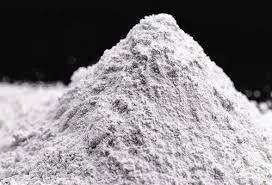
Aug . 19, 2024 22:19 Back to list
Exploring HPMC Variants and Their Applications in Pharmaceutical Formulations
Understanding HPMC Types and Their Applications
Hydroxypropyl Methylcellulose (HPMC) is a versatile cellulose derivative widely used in various industries due to its unique properties. HPMC is synthesized by the chemical modification of cellulose, a natural polymer sourced from plant materials. This modification imparts several beneficial characteristics to HPMC, including water solubility, thickening efficiency, and film-forming ability. The types of HPMC vary mainly based on their methoxy and hydroxypropyl content, each type serving distinct purposes across multiple applications.
Understanding HPMC Types and Their Applications
The second type is medium-viscosity HPMC. This type is commonly used in pharmaceutical applications. Medium-viscosity HPMC serves as a binder and a controlled-release agent in tablet formulations. Due to its ability to form gels in aqueous environments, it helps control the release rate of active pharmaceutical ingredients (APIs), improving the therapeutic effectiveness of medications. Moreover, it is often used in ocular preparations to lubricate dry eyes, providing comfort to patients with eye conditions.
hpmc types

The third type is high-viscosity HPMC, which contains a higher concentration of both methoxy and hydroxypropyl groups. This type is utilized in the construction industry as an essential component in tile adhesives, joint compounds, and other cement-based materials. High-viscosity HPMC enhances water retention and workability, allowing for longer open times when applying adhesives and improving the overall performance of construction materials. Furthermore, it provides increased adhesion, making it highly suitable for both interior and exterior applications.
Another noteworthy type of HPMC is the Pharmaceutical Grade HPMC, specifically formulated for medicinal applications. It is characterized by high purity and stringent quality controls, ensuring that it meets regulatory standards required for pharmaceutical products. This grade is often found in dosage forms, including tablets, capsules, and topical formulations. Its non-toxic nature and compatibility with various excipients make it a preferred choice among formulators in the pharmaceutical industry.
In cosmetics and personal care products, HPMC types are employed for their thickening and film-forming properties. High-viscosity HPMC is particularly effective in products like creams, lotions, and gels, where it helps achieve the desired viscosity and texture. By enhancing the stability and aesthetic appeal of these formulations, HPMC contributes significantly to consumer satisfaction.
In summary, HPMC is a multifunctional polymer that comes in various types, each tailored for specific applications across diverse industries. From food and pharmaceuticals to construction and cosmetics, the adaptability and performance of HPMC make it an invaluable resource. As industries continue to evolve, the demand for HPMC and its specialized types will likely increase, paving the way for further innovations in formulation and application technologies. Understanding the characteristics and uses of different HPMC types is essential for professionals seeking to leverage this remarkable compound in their respective fields.
-
Versatile Hpmc Uses in Different Industries
NewsJun.19,2025
-
Redispersible Powder's Role in Enhancing Durability of Construction Products
NewsJun.19,2025
-
Hydroxyethyl Cellulose Applications Driving Green Industrial Processes
NewsJun.19,2025
-
Exploring Different Redispersible Polymer Powder
NewsJun.19,2025
-
Choosing the Right Mortar Bonding Agent
NewsJun.19,2025
-
Applications and Significance of China Hpmc in Modern Industries
NewsJun.19,2025







